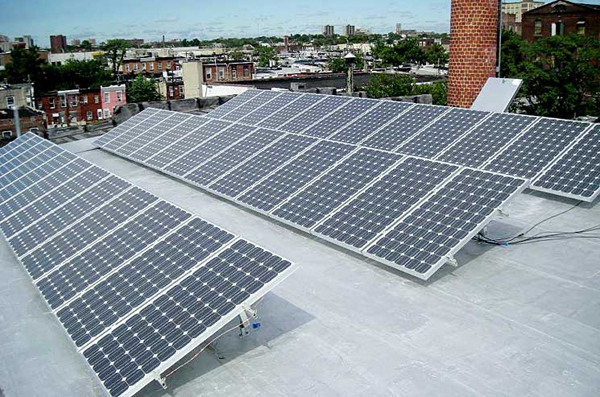- La Feria Native Soon To Retire From The Military This Summer
- Senior Eneece Avila Takes Pride in her State Title
- Dr. Noemi Infante, Harlingen Medical Center Open New Women’s Clinic
- Santa Rosa Cameron County Park Partially Reopens
- Santa Rosa Takes to Regionals Meet in Kingsville, Tx
- Long-Standing Nexstar Tower in La Feria Decommissioned
- Lionettes Powerlifting Meet
- Local Business Holds Event to Benefit RGV Shriners Club
- Knights of Columbus Holds it’s 30th Annual Golf Tournament
- KGBT Tower Dismantled
Cities Cut Energy Bills by Tapping Solar on Rooftops
- Updated: June 12, 2015
by Eric Galatas/TNS

A new report documents how five U.S. cities have leveraged solar to lower municipal energy bills, taxes and pollution. Photo: U.S. Department of Energy.
AUSTIN, Texas – Some U.S. cities are using solar power to cut their energy bills, and a new report shows how mid-sized cities could install as much as 5,000 megawatts of solar on municipal property with little to no upfront cash.
Report author John Farrell, director of the Institute for Local Self-Reliance, said the opportunities solar presents for cities is significant because of unused rooftop space – and because the private sector is poised to get the job done at no cost to taxpayers.
“But how easy it could be for them to do it,” he said, “because they can sign up with these companies that will install the solar for them, pay for it, and then just allow them to pay less for electricity.”
The institute projected that by 2021, 10 percent of electricity in the United States could be solar, and at a lower price than traditional utility-generated electricity.
The report also found that municipal solar installations help create jobs. It estimated that tapping Kansas City’s municipal solar potential of 70 megawatts could create 1,400 jobs and add $175 million to the local economy.
Farrell said installing solar on city rooftops has allowed municipalities to redirect millions in saved energy costs to other public purposes.
“Point-blank, the fact that cities spend a lot of money on energy,” he said, “the chance to cut energy bills for cities is a chance to save money that can be used to either reduce taxes or to spend on other items of public interest.”
The report highlighted cities such as Denver, which collects solar at its city-owned airport; Lancaster, Calif., which produces more solar energy on a daily basis than the entire city consumes; and New Bedford, Mass., which, by going solar, saves more than $6 million a year on electric costs.
The report is online at ilsr.org.






